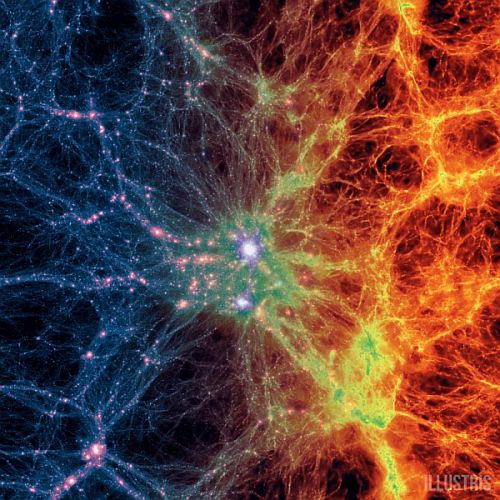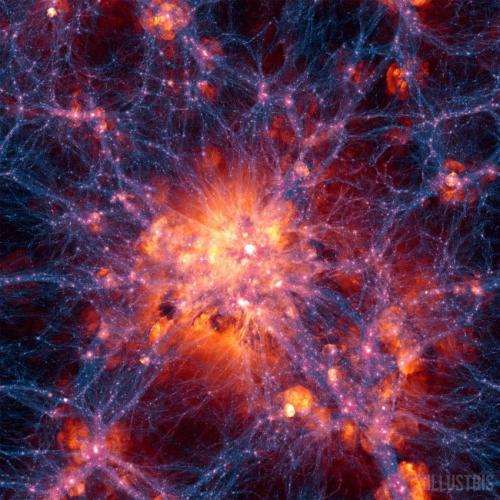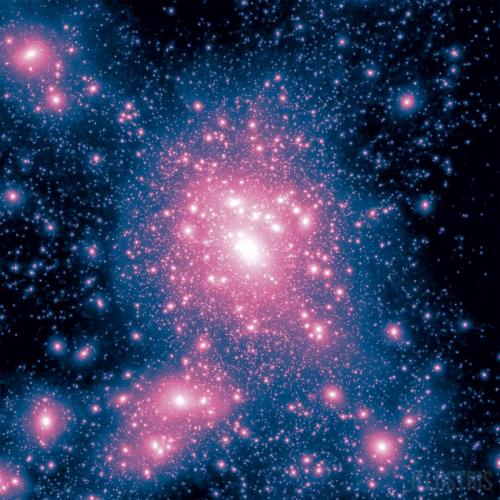We know how our universe look today and we have pretty good idea as to how it looked before the things started taking shape somewhere around the Big Bang. But we have no idea how the galaxies evolve and what was before the Big Bang. In order to study this, researchers at the MIT have built a computer simulation, they have named it the Illustris. This simulation is so complex that calculating on single desktop might take 2k years alone and its volume comprises around 215m light years.
Although there have been similar simulations fabricated before as well but this model delves deeper into the things and richly describe the forces at work much better relatively. By factoring laws of physics and theories of laws of universe as to how gases cool, the stellar life and what lead to the creation of black holes.
The model creates the galaxies and stars that we can see and the dark matter and dark energy that we cannot see.
Realistic Virtual Universe
The simulation starts at 12m years just after the Big Bang when things start to get interesting. Dark matter cluster together forming a web under the force of gravity, the experts call it the cosmic web. Where the dark matter is densest, it shows dark pink color. Likewise, ordinary matter also fuses forming similar clusters call the galaxies. Since it is colder is nature, so it forms color blue along its densest arena and cold clouds of gas, which further leads to the formation of stars.
Green depicts warmer gases while red & white shows the hot regions around the most violent galaxies. Massive black holes grow at the center of these. As they block black matter, they form super heat material around it, blowing out gases as violent bursts.
Distribution of Elements
Simulation also shows allocation of different elements. The early universe was full of helium and hydrogen. As stars form and die as super nova, they fuse these basic elements into heavier and complex compounds such as carbon, oxygen and metals. The violent bursts around black hole spread these elements across space.
Life depends on these chemical building blocks. When the universe has many of them, complex matter like planets begins to form. The universe’s evolution of fourteen billion years has pulled the tightly woven dark matter web into lucent network of giant galaxy clusters that we observe today.
The Challenges
Although the simulation is very much near to the original happenings however recreating the variety of giant galaxies, is a very tricky business since the number is around 40 thousand galaxies and we assume that there could be more of such matter unexplored across the vast expanse of universe.
It is noteworthy that the simulation matches the observation so well that it gives greater confidence in understanding the universe, after all, Illustris falls somewhere in the line of a time machine.
Source: Phys.org






